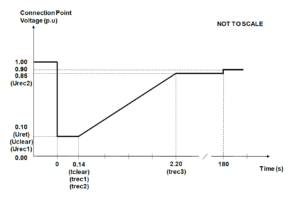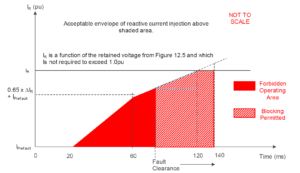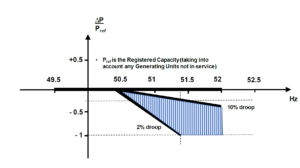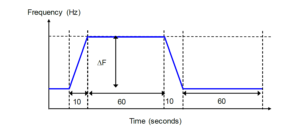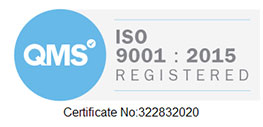ENA G99 Type B Plant and Studies Overview
ENA G99 has been with us for just over a year now and I think its fair to say it has been a bit of a rocky road so far. We are already on Amendment 6 of G99, as various issues and clarifications keeping coming up and the various review groups like DER and National Grid are trying to sort out and resolve, so it’s not perfect, but it is getting better. That said, everyone is more familiar with the standard now and there are less surprises in there to trip people up.
This paper prepared by Aurora Power Consulting is the first of two and looks at Type B plants (these are >1MW to <10MW), the second article (to follow shortly) will deal with Type C and D plants. The aim of this post is to explain in practical terms the implementation and studies process for demonstrating compliance to the DNO. Type B plants generally get a fairly easy ride with G99, but there are still a few pitfalls for the unwary. The below sections outline the basic requirements of each areas.
This post is written from the context of Solar PV plant, but equally applies to small Wind Farms. Plants with synchronous generators have very similar requirements to meet, but as their controllers (governors and AVRs) are more established, they generally have a much easier study and review process.
Reactive Power Flow
It is a requirement of the ENA ER G99, section 12.5, that power park modules must be capable of operating continuously within a certain power envelope. This is to ensure the required reactive power is either produced or absorbed to and from the connected grid. The site must be capable of continuous operation whilst, maintaining the ability to operate within a power factor between 0.95 lagging and 0.95 leading. The registered capacity and power factor are measured at the Point of Connection (PoC). Generators should take any site demand such as auxiliary supplies and the Active Power and Reactive Power losses of the Power Generating Module transformer or Station Transformer into account, unless advised otherwise by the DNO.
There are two interesting things to note about this study. First, it is worth doing very early on, as a lack of reactive power capability is a common problem, and if its identified early it can be solved quickly – what you don’t want to do is find this last and then have to redo all the other studies. Secondly, you don’t need a dynamic model from the inverter manufacturer to run this study – just the inverter PQ capability diagram.
To demonstrate compliance, two steady state loadflow studies need to be performed, which are:
- Case 1 – When operating at full Registered Capacity and 1 pu voltage, the site should be able to operate with a lagging PF of 0.95 (i.e. Exporting MW and MVAr)
- Case 2 – When operating at full Registered Capacity and 1 pu voltage, the site should be able to operate with a leading PF of 0.95 (Export MW and import MVAr)
When the studies are being carried out, what we are therefore looking at is a) can the site meet the MW and MVAr requirements at its Point of Connection and b) can it do so without overloading equipment. To put this into context imagine the generation site is rated at 5MW, it should be able to deliver +5MW (P) and +1.65MVAR (Q) export and +5MW (P) and -1.65MVAr (Q).
Where things have got a little confused, is that a lot of DNO connection agreements and equipment are stated in MVA. So, this means that the MVA (S) rating of the above would need to 5.265MVA (S2 = P2 +Q2), it is important to factor this in at the start or it can mean some of the transformers, inverters and other equipment might be undersized. Note the (Q) value used above are rounded very slightly, so not exactly a true 0.95pf value.
Fault Ride Through & Fast Fault Injection
It is a requirement of the ENA ER G99, section 12.3, that power park modules must be capable of riding through various network faults that result in a voltage disturbance on the electrical system. This is to ensure the inverters remain connected during a fault and can support the system recovery post fault. This can be shown below in Figure 2‑1 Type B Power Generating Module FRT Requirements
Figure 2‑1: Type B Power Generating Module FRT Requirements
The FRT requirements exist for four types of faults 1) 3-phase faults, 2) phase-phase faults, 3) phase-earth faults and 4) phase-phase-earth faults. Depending on the type of plant a retained voltage must be defined to show that the overall system voltage does not collapse totally to 0. However, it should be noted that a retained voltage of 0.1pu, is not actually possible for an unbalanced phase-phase fault.
It is also a requirement of ENA ER G99, section 12.6, that during a fault the power park modules injects reactive power into the system, to support the voltage recovery. Injection of reactive power into the system should occur when the system voltage when the system voltage drops below 0.9pu, and is based on the pre-fault reactive current injected, and the retained system voltage (see above). This can be seen diagrammatically in Figure 2‑2 Type B Power Generating Module FFI Requirements.
Figure 2‑2: Type B Power Generating Module FFI Requirements
The Fast Fault Injection is not very clearly worded in the G99 standard, but in essence, it is a study that should be considered in conjunction with the Fault Ride Through (FRT) behaviour, and during the FRT study, it is necessary to check that the inverter (or generator) is producing reactive power as the voltage collapse occurs.
So to demonstrate compliance with the above, ENA ER G99, Annex B 4.4 details four specific time based simulation studies (i.e. dynamic studies) that must be performed to define the system behaviour. The fault location, is set at the Point of Connection, and the four study scenarios performed are:
- Case 1 – balanced 3-phase fault.
- Case 2 – unbalanced phase-phase fault.
- Case 3 – unbalanced phase-phase-earth fault.
- Case 4 – unbalanced phase-earth fault.
The important thing to note with the above, is that for the simulation to be carried out it is essential to have a model of the inverter (or generator governor / AVR) that can be implemented within whichever modelling package the consultant is using (DIgSILENT or PSS/E etc.). Without this data from the manufacturer the study cannot take place.
Limited Frequency Sensitive Mode – Over Frequency
It is a requirement of the ENA ER G99, section 12.2, that power park modules must operate in a Limited Frequency Sensitive Mode (LFSM) and raise or lower their power output depending on the measured system frequency. This is to ensure the inverters modulate their power output in response to system power imbalances.
specifically, for Type B generating plants, the implementation of LFSM-O is required, where the module must reduce its power when the system frequency exceeds 50.4Hz. The response of the system depends on the droop setting of the inverter, which shall be between the limits of 2% and 10%. This can be shown below in Figure 2‑3 LFSM-O Response. Unless otherwise advised, it is assumed that a droop setting of 4% is used. It is noted that a droop setting of 2% will cause the inverters to unload more quickly than a droop setting of 10%.
Figure 2‑3: LFSM-O Response
To demonstrate compliance ENA ER G99, Annex B 4.5 details a single time based simulation study that must be performed to define the system behaviour, where the system is initially operating at RC, and then the frequency is raised to 52Hz. During the frequency deviation the module power reduction should begin occurring at 50.4Hz, at a rate consistent with the droop setting.
Figure 2‑4: LFSM-O Step Response
The two important things to note with the above, is that firstly, for the simulation to be carried out it is essential to have a model of the inverter (or generator governor / AVR) that can be implemented within whichever modelling package the consultant is using (DIgSILENT or PSS/E etc.). Without this data from the manufacturer the study cannot take place. Secondly, the simulation package must be capable of altering the system frequency to show the generator response behavior.
Summary
So, all those words and graphs apart what does all that mean for most developers. Let’s try and summarise the key points, into an easy bullet format.
- For developers of plant based on synchronous generators, there are more studies to do, but the requirements in G99 are fairly easy to meet provided that everyone plans for them.
- However, to meet the studies the generator manufacturer must have a model available of their generator controller that can be slotted into the consultants modelling software (usually DIgSILENT or PSS/E).
- Most UK/EU generator manufacturers will heave readily available models for the above, but not all have – so developers need to make sure of this before committing to buy equipment.
- Reactive power is now a headache for Solar PV and onshore wind farms, as there needs to be sufficient capability to meet the active and reactive power limits. This means that plants must be designed such that the rating is based on the kW capability of a generator / inverter and not its kVA rating.
As always, we hope you find the above useful. If you have any questions, please do not hesitate to get in touch with Aurora Power Consulting and we will be happy to help on your project. Understanding G99 and carrying out the studies is an essential part of the compliance process, and it is important not to leave it the last minute.
Legal Bits
The above is our interpretation of ENA G99, based on its current issue (presently Issue 1, amendment 6), and should not be taken as absolute advice. All images used in this article have been copied from the G99 standard, but the rest of this article is the copyright © of Aurora Power Consulting and should not be reproduced without our permission.

